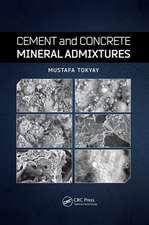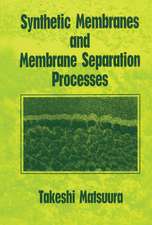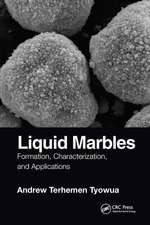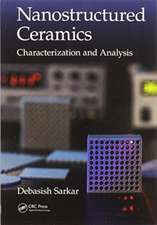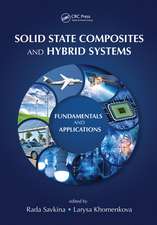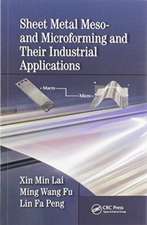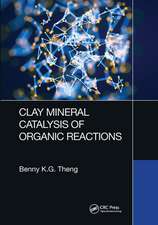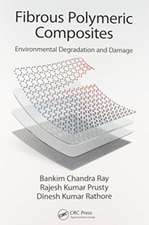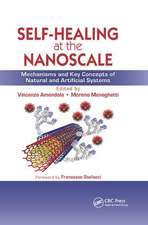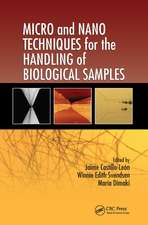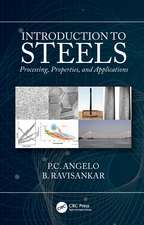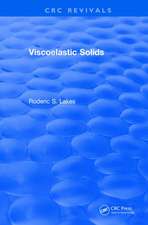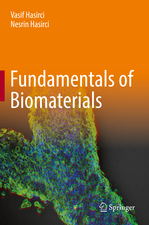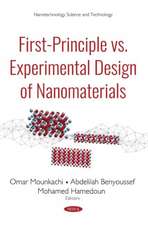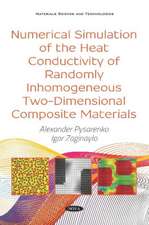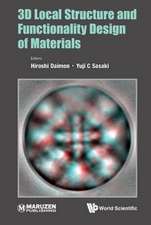Critical and Rare Earth Elements: Recovery from Secondary Resources
Editat de Abhilash, Ata Akcilen Limba Engleză Hardback – 21 noi 2019
Preț: 934.89 lei
Preț vechi: 1331.03 lei
-30% Nou
Puncte Express: 1402
Preț estimativ în valută:
178.95€ • 194.44$ • 150.41£
178.95€ • 194.44$ • 150.41£
Carte tipărită la comandă
Livrare economică 22 aprilie-06 mai
Preluare comenzi: 021 569.72.76
Specificații
ISBN-13: 9780367086473
ISBN-10: 0367086476
Pagini: 400
Ilustrații: 131 Illustrations, black and white
Dimensiuni: 156 x 234 x 28 mm
Greutate: 0.66 kg
Ediția:1
Editura: CRC Press
Colecția CRC Press
ISBN-10: 0367086476
Pagini: 400
Ilustrații: 131 Illustrations, black and white
Dimensiuni: 156 x 234 x 28 mm
Greutate: 0.66 kg
Ediția:1
Editura: CRC Press
Colecția CRC Press
Public țintă
Postgraduate, Professional, and Professional Practice & DevelopmentCuprins
1.An overview on recent status of critical and strategic metal production and developments in India. 2. Global Outlook On Availability Of Critical Metals And Recycling Prospects From Rechargeable Batteries. 3. Effect of Metal Complexation on the Solubility of Rare Earth Compounds. 4. Processing technology for extraction of scandium (III) from secondary sources - A comprehensive approach. 5. Review of the Recovery of Cobalt from Secondary Resources. 6. An overview of extraction schemes for the recovery of erbium. 7. Comprehensive outlook for liquid-liquid separation of Rare Earth Elements. 8. Selective recovery of heavy rare earth elements from underutilized resources using adsorbent modified with diglycolamic acid. 9. Selective Separation and Purification of Platinum Group Metals, Rare Earth Elements and Cobalt from Primary and Secondary Sources using a Green Chemistry Molecular Recognition Technology Approach. 10. Design of a Solid Phase Extraction Plant to Purify Rare Earth Elements by High Performance Chelation Chromatography (HPCC). 11. Designing a Process for RE Recycling from Motors through Green Chemistry. 12. Recovery of Ce and La from spent automotive catalytic converters.13. A Successful Case Study Of Critical And Rare Earth Elements Recovery From Secondary Resources: The Hydroweee Technology. 14. Recovery of precious and critical raw materials from end of life photovoltaic panels. 15. Environmentally and economically sustainable recovery of precious metals and rare earth elements from waste printed circuit boards. 16. Critical and Rare Earth Elements Recovery from Spent Batteries. 17. Phosphatic resources: a valuable wealth of rare earths. 18. Recovery of Rare Earth Elements from Coal Fly Ash: A Review. 19. Methodologies and Developments in the Analysis of REEs.
Notă biografică
Dr. Abhilash is a Senior Scientist in the Secondaries and Resource Utilization Group of the Council of Scientific and Industrial Research-National Metallurgical Laboratory, Jamshedpur, and Assistant Professor, AcSIR (Academy of Scientific and Innovative Research)-NML, India. He earned a Bachelor’s degree in microbiology from Nagpur (RTM) University, a Postgraduate degree specializing in mineral biotechnology from Bangalore University, and a PhD (Engineering) from Jadavpur University. Dr. Abhilash works in the area of hydrometallurgy, biohydrometallurgy, mineral bio-beneficiation and recycling of secondaries and WEEEs for extraction of base, critical and strategic metal recovery. He has participated in 30 R&D funded projects, has 20 scientific awards, author & co-author in 75 research papers in national & int. journals, 1 authored book, 3 edited books, 2 compendium volumes, 6 book chapters, active editorial board member in 2 peer-reviewed scientific journals, active reviewer in 20 peer-reviewed scientific journals. He is a member of several nationally and internationally recognized societies and professional organizations in the field of microbiology, minerals, metals, materials and environment.
Professor Ata Akcil (PhD-Eng.) is a professionally registered engineer with over 30 years of academic and industrial experience in critical raw materials, hydrometallurgy, environmental mining management, cyanide management and recycling. He has worked and developed hydro-and-bio-hydrometallurgical technologies for precious, base and REEs metal recovery. He is the Head of the Mineral-Metal Recovery and Recycling (MMR&R) Research Group, SDU, Isparta, Turkey. He is also a technical senior expert for critical and strategical raw materials and resource recovery, and member of Operational Group, Euro. Innov. Partnership on Raw Materials (European Commission). His global assignments as coordinator, researcher, consultant, expert, reviewer and examiner have included projects in Europe (Germany, Italy, Romania, Poland, Hungary, Montenegro and Belgium), RSA, Canada, Kazakhstan, Turkmenistan, Jordan, India, Chile, Sweden and Turkey. He has participated in 50 R&D funded projects, has 25 scientific awards, author & co-author in 200 research papers in national & int. journals, 1 book, 10 book chapters, 60 International proceedings papers (5,000 citations; h-index: 30; i10-index: 59), active editorial board member in 5 peer-reviewed scientific journals, active reviewer in 60 peer-reviewed scientific journals. He has evaluated several research proposals (over150 proposals) and peer-reviewed papers (over 1,500 papers) in his area of expertise.
Professor Ata Akcil (PhD-Eng.) is a professionally registered engineer with over 30 years of academic and industrial experience in critical raw materials, hydrometallurgy, environmental mining management, cyanide management and recycling. He has worked and developed hydro-and-bio-hydrometallurgical technologies for precious, base and REEs metal recovery. He is the Head of the Mineral-Metal Recovery and Recycling (MMR&R) Research Group, SDU, Isparta, Turkey. He is also a technical senior expert for critical and strategical raw materials and resource recovery, and member of Operational Group, Euro. Innov. Partnership on Raw Materials (European Commission). His global assignments as coordinator, researcher, consultant, expert, reviewer and examiner have included projects in Europe (Germany, Italy, Romania, Poland, Hungary, Montenegro and Belgium), RSA, Canada, Kazakhstan, Turkmenistan, Jordan, India, Chile, Sweden and Turkey. He has participated in 50 R&D funded projects, has 25 scientific awards, author & co-author in 200 research papers in national & int. journals, 1 book, 10 book chapters, 60 International proceedings papers (5,000 citations; h-index: 30; i10-index: 59), active editorial board member in 5 peer-reviewed scientific journals, active reviewer in 60 peer-reviewed scientific journals. He has evaluated several research proposals (over150 proposals) and peer-reviewed papers (over 1,500 papers) in his area of expertise.
Descriere
This book compiles the distribution of rare earth elements in various resources and their processing from secondary resources including varied raw materials ranging from e-wastes, tailings, process wastes and residues. It covers importance of processing of the secondary resources to assist environmental remediation along with relevant case studies.


